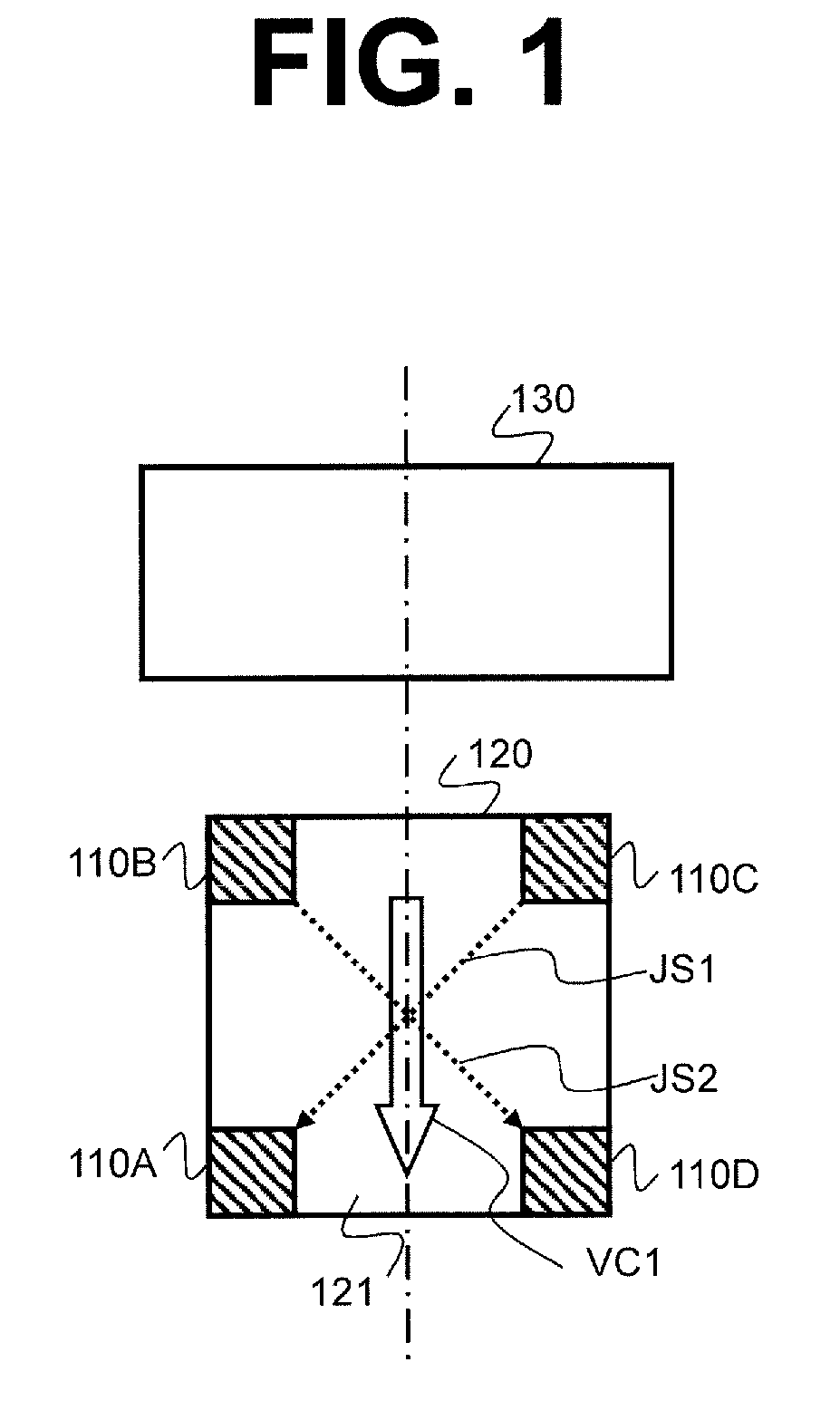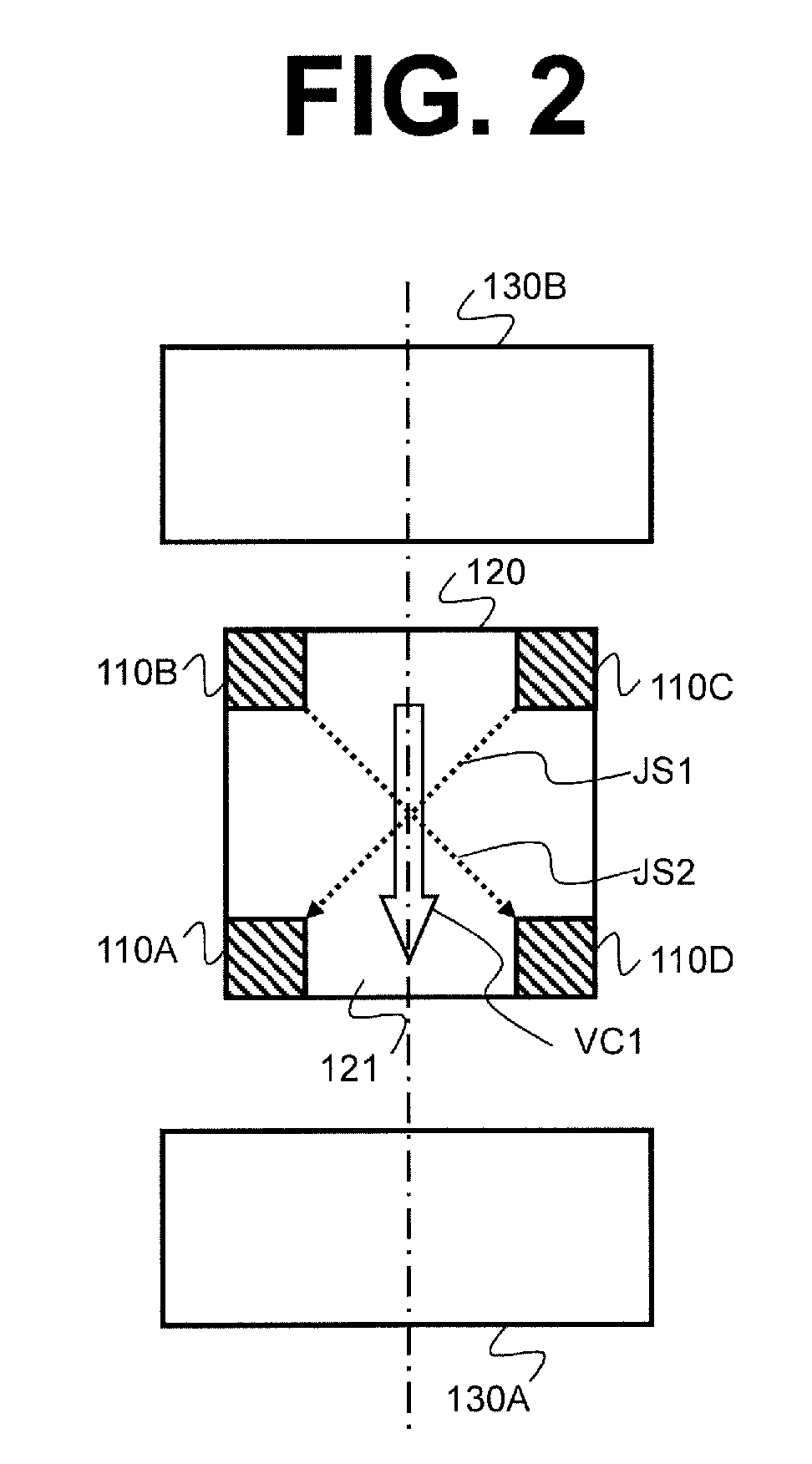Hall sensor
a sensor and semiconductor technology, applied in the field of semiconductor hall elements and semiconductor hall sensors, can solve the problems of partial cancellation of offset voltage and uneven electric potential distribution, and achieve the effects of reducing chip size, reducing cost, and eliminating offset voltag
- Summary
- Abstract
- Description
- Claims
- Application Information
AI Technical Summary
Benefits of technology
Problems solved by technology
Method used
Image
Examples
first embodiment
[0043]FIG. 1 is a plan view for illustrating a Hall sensor according to a first embodiment of the present invention. The Hall sensor includes a Hall element configured to sense magnetism and a circuit configured to drive or control the Hall element.
[0044]First, a description is given of a shape of the Hall element. As illustrated in FIG. 1, a Hall element 120 includes, on a semiconductor substrate, a magnetism sensing portion constructed by a square N-type doped region 121 and control current input terminals and Hall voltage output terminals 110A, 110B, 110C, and 110D constructed by N-type highly-doped regions having the same shape, which are arranged at respective vertices of the square magnetism sensing portion. The Hall element 120 is configured as described above, resulting in a symmetrical Hall element.
[0045]A description is now given of a positional relationship between the Hall element and a heat source. A circuit configured to drive the Hall element 120 is arranged on the su...
second embodiment
[0057]In the first embodiment, referring to FIG. 1, a description is given of the case where the number of the heat sources is one, but the number of elements that generate heat out of components of the circuit configured to control the Hall element is not limited to one. FIG. 2 is a plan view for illustrating a Hall sensor according to an embodiment of the present invention that includes a plurality of elements (heat sources) 130A and 130B that generate heat out of components of the circuit configured to control the Hall element 120.
[0058]Even in the case where the plurality of heat sources exist, the offset may be eliminated by aligning the centers of the respective heat sources 130A and 130B with an extension line of the vector sum VC1 of the Hall element control currents JS1 and JS2 in the two directions by the spinning current method.
[0059]On this occasion, the center of the heat source means a point or a region having the highest temperature corresponding to a peak of isotherm...
third embodiment
[0061]Further, as illustrated in FIG. 3, when the heat source needs to be arranged in a direction perpendicular to that of FIG. 1 and FIG. 2, the offset may be eliminated by optimizing the directions of the Hall element control currents JS1 and JS2 so as to align the center of the heat source 130 with the extension line of the vector sum VC1 of the Hall element control currents JS1 and JS2.
PUM
 Login to View More
Login to View More Abstract
Description
Claims
Application Information
 Login to View More
Login to View More - R&D
- Intellectual Property
- Life Sciences
- Materials
- Tech Scout
- Unparalleled Data Quality
- Higher Quality Content
- 60% Fewer Hallucinations
Browse by: Latest US Patents, China's latest patents, Technical Efficacy Thesaurus, Application Domain, Technology Topic, Popular Technical Reports.
© 2025 PatSnap. All rights reserved.Legal|Privacy policy|Modern Slavery Act Transparency Statement|Sitemap|About US| Contact US: help@patsnap.com



